KEY POINTS:
I share some highlights from Module 1 (of 3) of a training I developed for the Critical Ecosystem Partnership Fund (CEPF), based on stories from their Indo-Burma Hotspot grantees working to include women in conservation
Making the case for women’s involvement in conservation: their reliance on natural resources, their skills and knowledge, and their rights
Framing this as *not* just a women’s issue
Working with gender issues can be *complicated* - it’s important to be aware of the risks involved, and to keep key principles in mind (including context sensitivity and “Do No Harm”)
MAIN:
Today's focus is part of the very broad topic of "gender inclusion" in conservation.
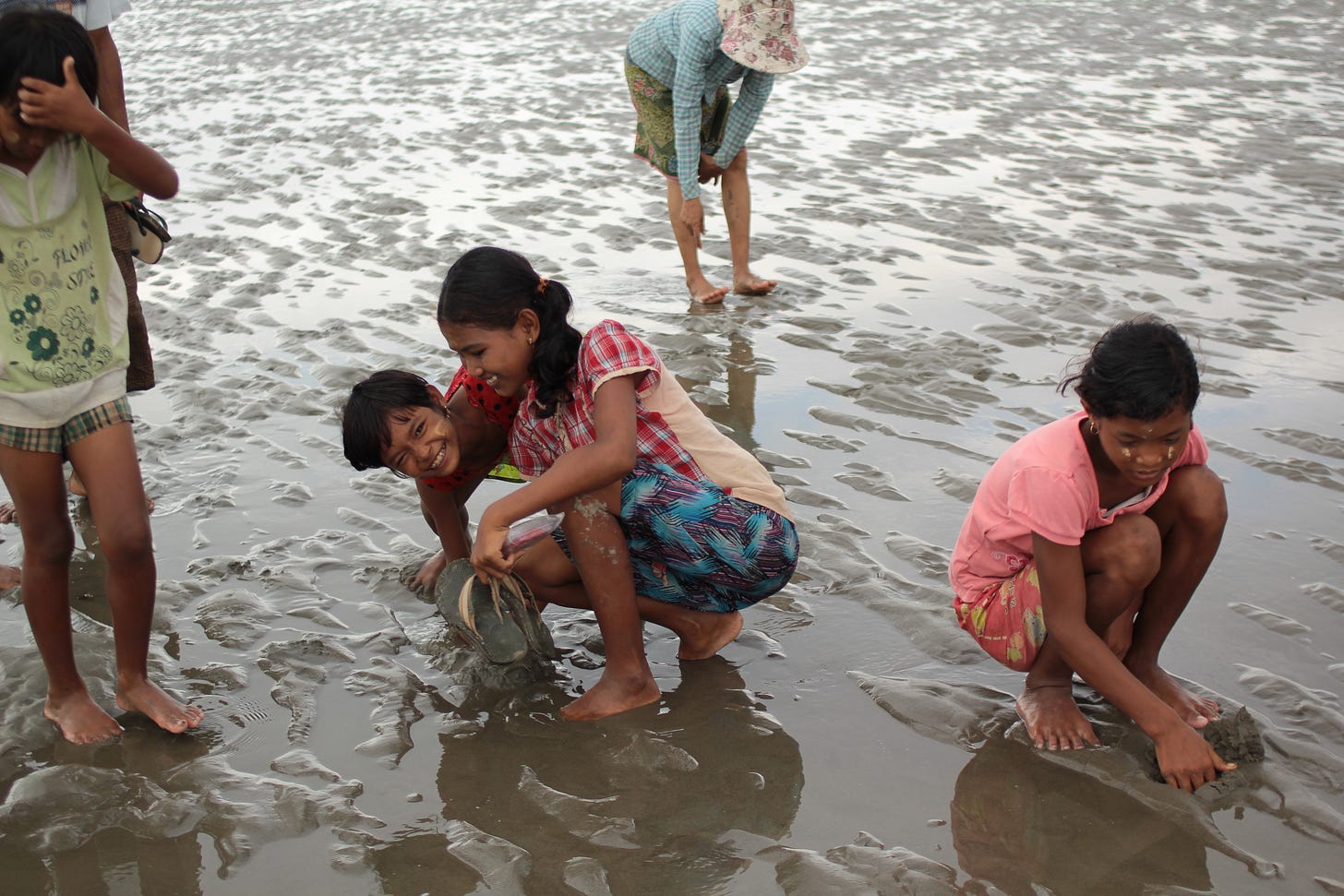
I'm basing this off of a knowledge product that I, well, produced, for the Critical Ecosystem Partnership Fund (CEPF). CEPF wanted to gather stories from its Indo-Burma Hotspot grantees who had done good work toward amplifying women's involvement in conservation, and to synthesize key learning points to share with its grantees globally. I loved this contract, and I also love that the training modules I created for this are publicly available, so I can share them with you now! And if you'd like to see the whole thing (which I highly recommend), it's available at this link1, 2.
Of the 3 modules, today I'll focus mainly on Module 1. I'll dive into the rest of it in the coming weeks! Note: this is very simplified, targeted toward a specific audience (overworked staff of small conservation organizations), and there are many excellent, in-depth resources that I encourage you to seek out if you'd like to learn more.
Making the case: Why women are important in conservation
Justifying why half the population is important to, well, anything, might feel a bit unnecessary. But the unfortunate truth is that women's involvement and leadership is generally underappreciated across a broad array of societal and cultural contexts. This includes rural communities which often are on the frontlines of conservation action, and where traditional patriarchal values often run strong.
I saw this firsthand, leading a gender training for indigenous civil society organizations in Myanmar. These are fierce advocates who understood inequity and fought for indigenous autonomy and representation in environmental decisions, yet the young men who joined the training made it obvious from their body language that they weren't interested in being there. It took the Myanmar Coastal Conservation Lab team (Wint Hte, Aung Naing Soe, and Yin Yin Htay) and me some hefty effort and an intentionally fun, interactive training to get them to come around (and they were really into it by the halfway point).
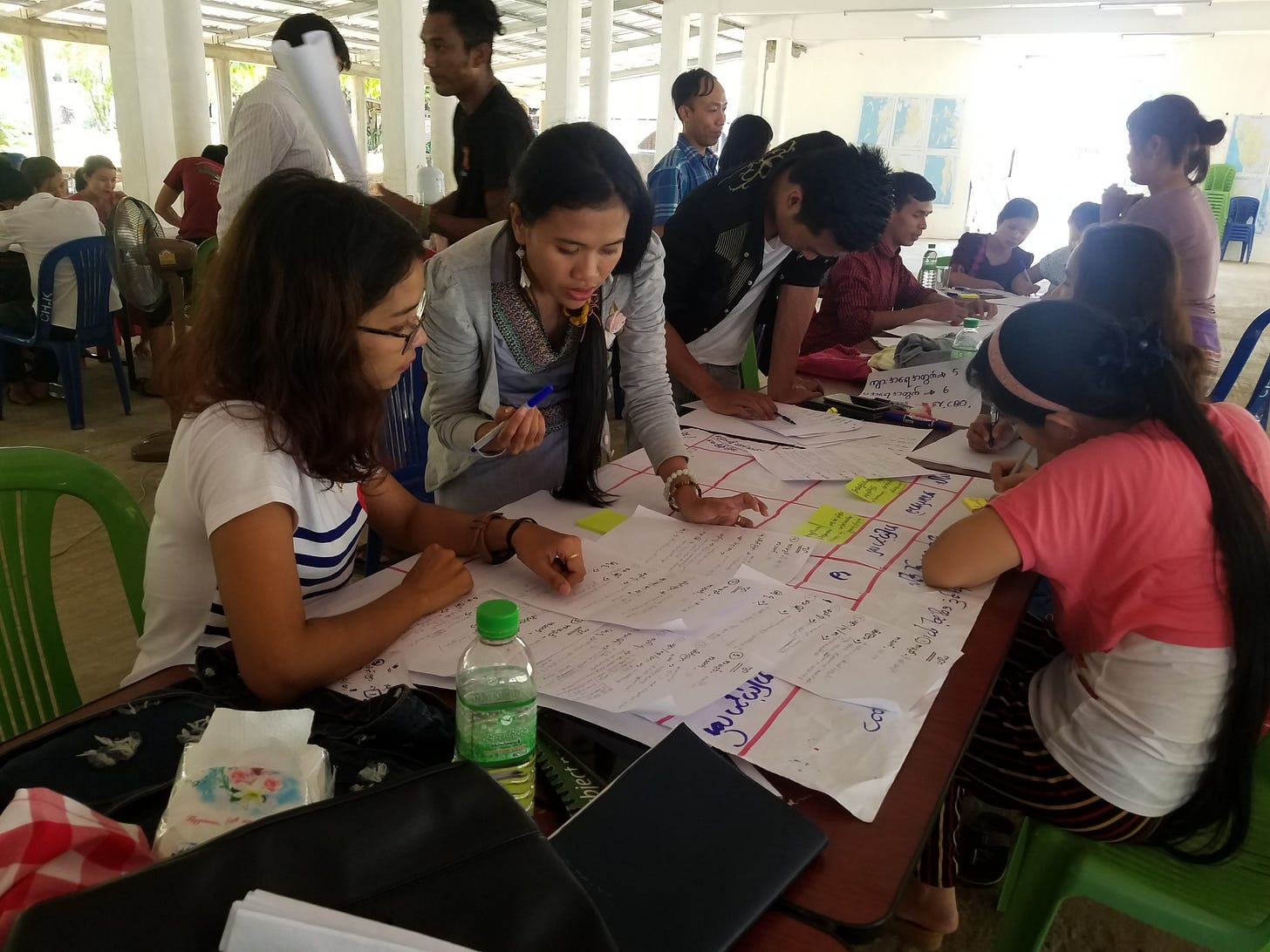
So, diplomatically making the case for women's involvement in conservation is indeed often necessary.
Four reasons why women should be involved in conservation:
Women's reliance on natural resources: Threats to natural resources can negatively impact communities who depend on them, including women and the households they often manage. And impacts can differ between men and women.
Women's experience, knowledge, and skills: Women have learned from how they use their resources, manage their livelihoods and households, and participate in their communities. They already have valuable skills and knowledge, and! have a lot of potential for learning further skills and knowledge. Development and humanitarian projects have found that the whole community benefits when women are meaningfully involved in community activities.
Women's rights as human rights: Women have the right to be involved in decisions that affect their well-being. Women's rights are recognized internationally as well as in the policies of many countries.
This is a bit utilitarian, but: Gender mainstreaming is often a requirement of donors and funding sources. (Hopefully this isn't the only motivation for getting on the gender equality train, though!)
An important framing of women's involvement
A network for Mon Women (an ethnic group in Myanmar) shared this tip for me as I prepared for the aforementioned training. They often present an image of a bird, and explained: Men and women are "two wings of the same bird." Their families and communities will fly farther if both wings work together.
This helps present gender equality as not just a "women's issue," but one that is important for all.
Related points:
Men can also be harmed by gender biases and stereotypes about masculinity
Men can be "gender champions" that support women and help build their capacity to work in conservation
Understanding the context for gender inequality
It can be helpful to present some background as to *why* women might not be viewed as potential partners or leaders in conservation. The underlying context (presented in a very simplified manner):
Gender norms (social expectations about what the different genders can and should do) shape gender roles in the household and community. Those norms also shape access to education and other opportunities, which can be further impacted by gender roles (e.g., girls being pulled out of school to help around the house). Those norms and gender roles, plus unequal access to education and opportunities, reinforce perceptions and biases against women's involvement (that they don't have the right to be involved, don't have the knowledge and skills to be involved, don't have the potential to be involved).
Many traditional cultures include expectations that women care for the children and household, and that men are the leaders in the household and community. It can be considered inappropriate and/or unsafe for women to act or travel independently.
Important to note: gender issues are rooted in deeply-held beliefs, traditions, and practices, and so can be difficult and complicated to change (especially if driven by external actors). Remember this!
Key principles and considerations
Related to that last sentence - here are critically important considerations when embarking on work in gender (I mean, the ideal is to have an expert guiding this work, but many organizations - for various reasons - often cannot or do not hire such an expert).
CONTEXT SENSITIVITY
Understand and be sensitive to the local context of gender roles and related dynamics. Make sure that your plan and activities are appropriate to this context.
DO NO HARM
A common principle for humanitarian aid and medical professionals: The well-being of the people we are trying to help must be the focus of our efforts to help them. Project interventions must not cause harm to the target communities.
MEANINGFUL PARTICIPATION
Many projects might aim for quantitative metrics of equality, e.g. 50% of their activity participants being women. But this does not tell us much about how these women are participating. It's important to support women to actively participate and lead, not just to attend meetings without acting (or without being listened to).
INTERSECTIONALITY
Gender is important, but there are many other components to someone's identity that might influence how they are treated and how they operate in the world. These include: ethnicity; religion; socioeconomic status; disability; age; sexuality; gender identity. These can interact to have a combined effect (e.g., experiences of indigenous women, indigenous men, non-indigenous women, and non-indigenous men are all different)
CAUTION: CONFLICT IN HOUSEHOLDS
A common issue that can emerge when projects work to engage women is an increase in conflict, or even gender-based violence, in households. This can be a result of:
Husbands and other family members not approving of their wives being more active, or active in new roles, in the community
Wives not having enough time to participate in activities and tend to their domestic duties, which can upset husbands or other family members
Disapproval or gossip from community members about women who become active in new roles, or collaborate with men, outside of their households
These are all real outcomes that have been shared with me and my collaborators via interviews, focus group discussions, and trainings.
So, it's critically important that your activities avoid this sort of disruption as much as possible, through:
Engaging husbands, families, and communities to help them understand and support women's involvement in conservation activities
Making it easier for women to participate while maintaining their domestic activities
Being aware of this serious risk, and monitoring for it
CAUTION: ADDITIONAL BURDEN ON WOMEN
Consider the additional burden your project expectations might put on women who are already busy. Think about:
How your project adds responsibilities to your participants' lives: e.g., women are often expected to prepare food for project events, and all participants need to make time to attend meetings, events, trainings, etc.
How your project might add risk to your participants' lives: e.g., risk of being punished for speaking out against government projects; travel-related safety risks, especially around gender-based violence; risk of domestic violence
Whether your project supports women, and other participants, to make these additional responsibilities and risks minimal and manageable.
Assessing and anticipating such risks and additional responsibilities, developing mitigation strategies (safeguards) for them, and monitoring for them are non-negotiable for responsibly-run projects.
General "good practice"
This is VERY over-simplified, but in a nutshell, working on gender issues requires:
Trust
Sensitivity and empathy
Monitoring of impacts
Time
I would also strongly, strongly recommend collaboration with organizations and experts that focus on women's rights, including in the context of community development and humanitarian aid.
The "time" component is tricky for small conservation organizations who usually must patch together small, short-term grants. The organizations I interviewed for this worked to make sure that each project incorporated gender equality as a goal for project activities, and to coordinate gender equality goals, strategies, and activities across different projects over time.
Stay tuned for more
There's more, folks! Lots more! I'll follow up on this with quick dives into Module 2 and 3 in separate posts. Module 2 presents a framework for incorporating gender into conservation work, while Module 3 presents specific ways of working to help actually implement that framework. I'll share some recommended resources in those posts - I ran out of time to do so today!
1 A note: I called this training "Empowering Women in Conservation," despite some misgivings about the word "empowering." I believe I did so to sort of echo verbiage used by CEPF, and also because it is a widely recognized and understood term. Because gender inclusion is a relatively new concept for many types of conservation groups, I kept this at a sort of "gender inclusion 101" level.
2 Another note: I recognize that gender identity is not a strict binary. However, again, I was keeping this at an introductory level, and many of the groups who make up the target audience are operating in traditional societies for which the "gender binary" is the dominant norm.
ACKNOWLEDGEMENTS
I want to thank the CEPF grantees who shared their time and experiences with me:






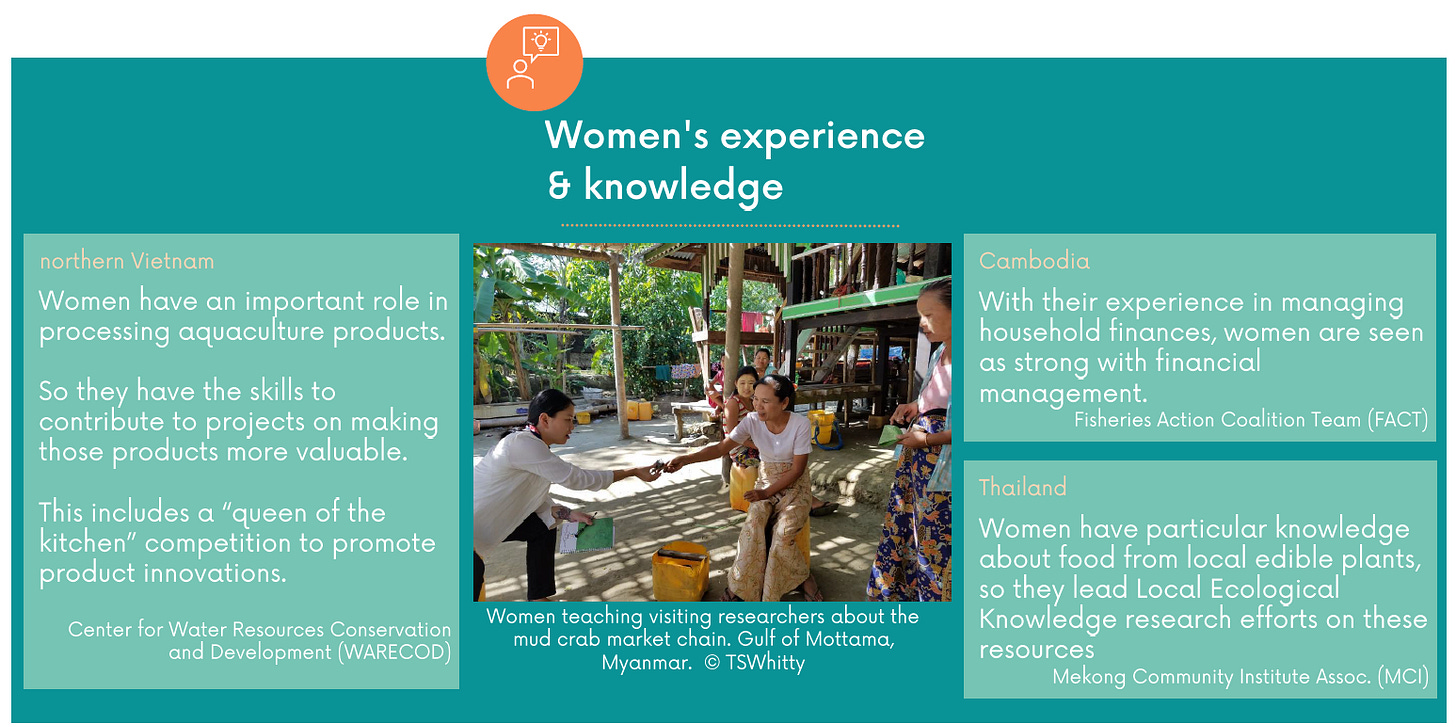




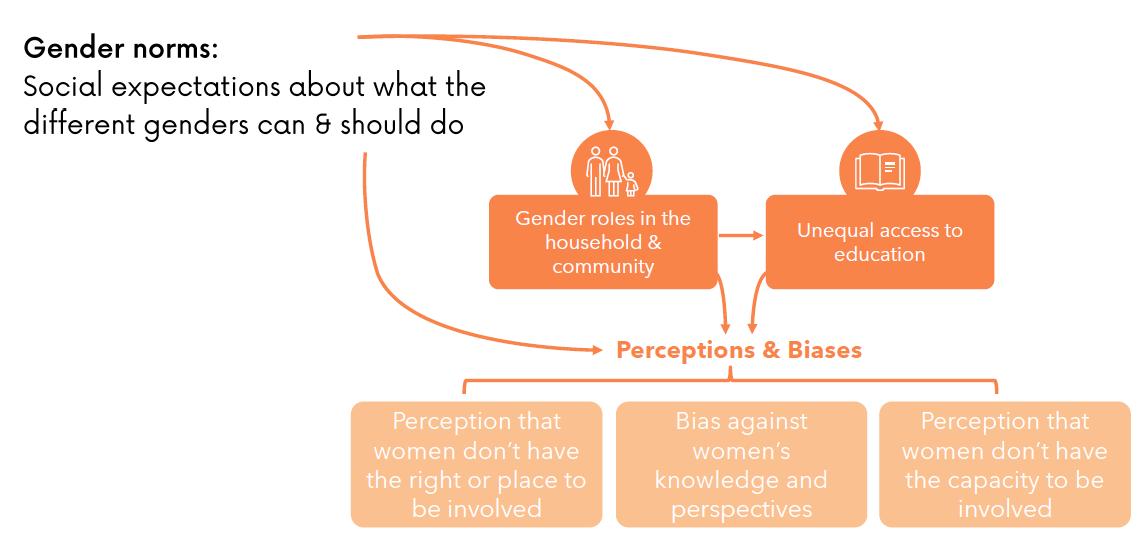


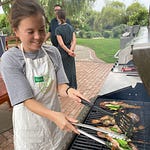




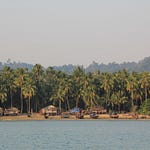
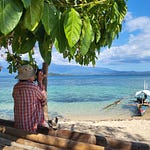
Share this post